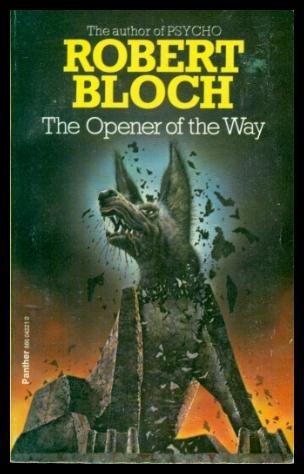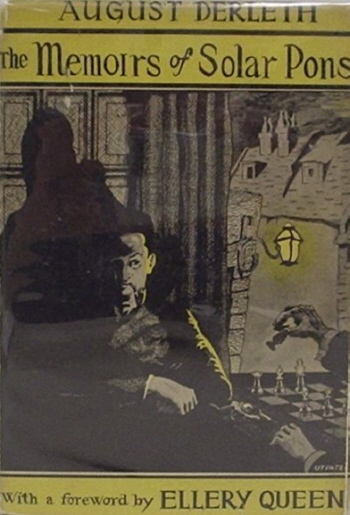By Scott A. Cupp
This is the 186th in my series of Forgotten Books.
Like most readers, I go through phases where I binge on certain types of books and try to collect them in various editions. One of my longer manias involved Arkham House books. I went through several stages where I wanted the words to all their titles or I wanted nice collectible copies of all their volumes. That path, I can assure, you will lead to destitution and madness. That would particularly be true now if you are starting your collection now and do not have really deep, deep pockets.
Back when I was looking at the Arkham House titles, they were expensive. And, while I work with accounting and money and the like, I have never been one to let my better judgment stand in the way of something I want. Well, not quite true. In 1973, I was offered a presentation copy of Lewis Carroll’s Phantasmagoria for a mere $150. At the time, I was working maybe 20 hours a week, for less than $2 per hour while attending school. That $150 price tag represented close to two months take-home pay for me. I was barely able to stay in school and feed myself at the time, so I had to let it go. But that potential purchase always remains back in my thoughts. What might have happened? What might have happened was that I would have lost my apartment, been unable to pay my bills and I would have had to sell the book, along with many other nice things, in order to keep a roof over my head, my car running and food on the table.
That book was THE ONE that got away.
I have had many fine things over the years, but Arkhams were always one thing I loved. I once convinced a bookstore to order the entire available Arkham catalog and tried to buy them one at a time for a while. They were only $4 or $5 each at the time, but even then, I had trouble getting them paid for. It caused some stress in my relationship with the bookstore.
Arkham, for those who have made it this far and don’t really know what I am talking about, is a specialty publisher, that started as a venue for August Derleth and Donald Wandrei to publish a memorial volume for H. P. Lovecraft, since no commercial publisher was interested. They launched the enterprise with The Outsider and Others in 1939. They soon also published more Lovecraft and Clark Ashton Smith, along with Robert E. Howard’s amazing Skullface and Others. They did the first books of many fine writers of the weird, fantastic and horrible. People like Ray Bradbury, Fritz Leiber, Seabury Quinn, William Hope Hodgson and Robert Bloch. Their volumes are wonderful, filled with stories only available to those with a fantastic pulp magazine collection and deep pockets. My first Arkham book was The House on the Borderland and Other Stories by Hodgson, which reprinted the title novel and three others. I ran across Hodgson through Ballantine’s Adult Fantasy Series and loved his work.
Over the years, I acquired several Arkham House books, some like the Hodgson expensive, others like Lord Kelvin’s Machine by James P. Blaylock not nearly so much. But I never had The Opener of the Way by Robert Bloch, which was published in 1945. It was Bloch’s first book.
For several titles, such as the massive Clark Ashton Smith volumes, I got the British publisher Neville Spearman’s 1970’s reprints. Sure, you had to order them from England and it took forever and the postage was expensive, but CAS was worth it. Spearman did The Opener of the Way in 1974 but I missed it. Again, funds were a big reason.
In 1976, British publisher Panther released the massive collection in two paperback volumes, The Opener of the Way and The House of the Hatchet. Last year, I got the first of those volumes, not realizing it did not contain all of the hardcover title. And that is what I read this week.
This volume contains ten stories from the hardcover edition, including the title story, “Beetles,” “Yours Truly, Jack the Ripper” and “The Fiddler’s Fee,” all stories I really liked. They suffer slightly from being together, as many of the stories contain that final line that serves as a “Gotcha!” with the Ripper story being a superb example. Others you could see coming.
I like Robert Bloch’s work. About 6 months ago I reviewed his novel The Will to Kill here and it was great. This volume holds up reasonably well. It does represent early work by Bloch who matured as he wrote more.
Those who want the whole volume can get the Arkham House volume (starting in the $400 + range on up to a price with a comma in it), the Neville Spearman edition ($30 to $750), the two paperbacks (between $10 and $20 each) or The Early Fears by Bloch (Fedogan and Bremer, 1993), which reprints all of Opener (except the introduction) and Pleasant Dreams, another early collection.
Go forth and collect.
Series organizer Patti Abbott usually hosts more Friday Forgotten Book reviews at her own blog, and posts a complete list of participating blogs.



